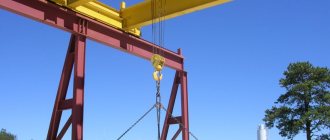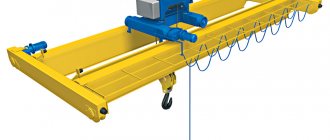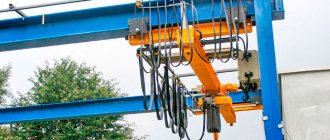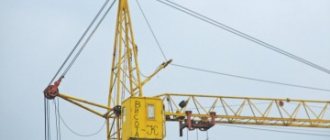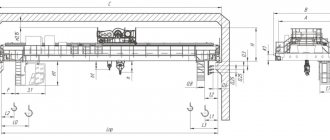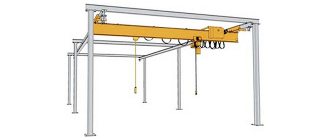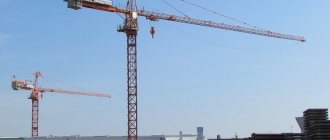Didn't find your city on the list? Call +. We are always ready for mutually beneficial cooperation!
We provide services in the following cities
| Arkhangelsk | Volgograd | Kislovodsk | Nizhny Novgorod | Ryazan | Tolyatti |
| Astrakhan | Vologda | Krasnodar | Eagle | Samara | Tula |
| Belgorod | Voronezh | Kursk | Orenburg | Saint Petersburg | Ulyanovsk |
| Blagoveshchensk | Ivanovo | Lipetsk | Penza | Saratov | Ufa |
| Bryansk | Kazan | Magnitogorsk | Pskov | Smolensk | Cheboksary |
| Velikiy Novgorod | Kaluga | Moscow | Pyatigorsk | Stavropol | Chelyabinsk |
| Vladimir | Kirov | Murmansk | Rostov-on-Don | Tver | Yaroslavl |
A tower crane is the optimal solution to the problem of delivering building materials to significant heights. It is this fact that explains their demand for the construction of buildings for various purposes (industrial, residential, industrial).
Installation of a tower crane requires high-altitude work and the use of additional equipment. The assembly of lifting equipment of this type is a priority activity of TekhKranMontazh.
Our company’s specialists have been certified, have the appropriate permits and will professionally carry out installation work on crane equipment in a short time.
Need a tower crane installed? Call + or send technical specifications to
"TechKranMontazh" offers installation of tower cranes of various models:
- Tower crane of domestic production: KB 401; KB 403; KB 405; KB 408; KB 473; KB 474; KB 503; KB 504; KB 515; KB 674; KB 676.
- Installation of imported tower cranes: POTAIN; Liebherr; Terex, YANGMAO; SOIMA; Linden Comansa.
Why is it important to entrust installation to professionals?
carries out a full range of installation work in the field of lifting equipment. In addition to the practical part of installation, during the preparation process or after installation, it may be necessary to perform a number of works related to the preparation of technical documentation, development of a work plan, preparation of documentation and subsequent registration of equipment with Rostekhnadzor authorities (in the case of cranes falling under the supervision type). Our company’s specialists have been working in the field of lifting equipment for more than 10 years and have highly specialized qualifications.
Possible installation steps (each case is individual, some steps may not be required depending on the equipment):
- Assessing client needs and analyzing the equipment installation site.
- Preparation of technical solutions.
- Development and approval of a work project (WPP).
- Carrying out installation work.
- Correction of manufacturing defects.
- Installation of additional equipment (frequency converter, radio control, collision sensors, etc.).
- Commissioning works.
- Carrying out static/dynamic tests.
- Registration of equipment with Rostekhnadzor authorities.
We are valued for our responsibility
The composition of our team allows us to carry out a full range of work, from preparing solutions and developing technical and regulatory documentation, to handing over the installed equipment to government agencies, without the involvement of contractors. This approach makes the work transparent and our clients do not need to control several contractors who shift responsibility to each other.
Correspondence "price-quality"
In the search for a more advantageous offer, the role of installation and performers is often underestimated, and only in some cases questions are asked:
- Is a specialized organization required for installation?
- Should specialists performing installation work be certified in a special way?
- If the equipment works after installation, does this mean 100% that everything is fine with it?
- The fact that the cost of installation may differ by 2 times is because the company wants to earn more?
The further efficiency and service life of lifting equipment depends 50% on compliance with the rules and regulations during its installation.
If errors are made during installation, there may be both obvious problems (frequency converter burned out, damage due to incorrect connection, etc.) and hidden defects (which become apparent over time).
The problem with obvious defects most often lies in their concealment. The contractor most often tries to hide or correct the problem with minimal means, which leads to makeshift solutions and unsafe/less efficient operation of the equipment in the future.
Hidden defects are most often revealed over time. Due to incorrect installation of the crane, increased wear on the flanges of the wheels that rub against the rail may occur; in this case, the rail will wear out before the standard period, and the load on the gearmotors increases, which can lead to their failure. If the problem is not identified immediately, it will be almost impossible to determine the true cause during further operation.
Everything is according to the law
In addition to practical experience and theoretical knowledge, our specialists undergo advanced training courses and have certificates that allow them to carry out all the work performed.
For specialists:
- Occupational Safety and Health
- Occupational safety (work at height)
- Fire technical minimum
- electrical safety
- Technological equipment installer
- Slinger
- Cradle worker
- Safety device adjuster
- Certified welder (NAKS)
- Industrial safety expert certificate
For the company:
- Welding qualification technology
- SRO
Installation of console cranes
When installing a jib crane, a team of specialists consisting of three people is involved. During installation, manual hoists or a loader are used, and if the jib crane is large in size and weight, a truck crane or other special equipment is used.
When installing a wall-mounted jib crane, the condition of the load-bearing wall or other vertical surface to which the crane will be attached is assessed. If defects are detected or the wall cannot bear the required load, a set of measures is carried out to strengthen the load-bearing surface.
In the case of a stationary jib crane, the foundation for the crane is first prepared, a foundation design is drawn up, pouring is done, and then the crane is installed. We can assess soil conditions or foundations, develop a project, prepare the foundation and install equipment.
In the case of a mobile jib crane, we will assemble all components and carry out adjustment of moving structural elements.
For detailed information on the installation of console cranes, please see the corresponding page of our website.
If the crane design provides for the installation of electrical equipment, then we provide power supply. The next stage includes a complex of commissioning works. Upon completion of the work, static and dynamic tests of the crane with a load are carried out: for static tests, a load 25% higher than the rated load capacity is used, and for dynamic tests, the load must exceed 10%.
Installation and dismantling of a tower crane, assembly and disassembly technology
Enclosing structures and columns. Dismantling of external wall panels is carried out completely in sections downward or partially by removing a row of panels adjacent to the roof.
First, using jackhammers, the monolithic seam is broken along the contour of the panel. Then it is slung using a device that includes two brackets with fixing fingers (Fig. 9.6). The cutting of the embedded parts securing the panel to the columns is carried out using a gas cutting machine. At this time, the panel being dismantled must be held in place by a crane and braces. The freed panel is placed on a vehicle parked within the crane’s operating area for subsequent removal.
Dismantling of wall panels of multi-storey buildings should be carried out alternately on each floor, including using a self-propelled jib crane, which dismantles the covering slabs. Workers are accommodated in hanging cradles, periodically rearranged around the perimeter of the building. Replacement of columns inside the workshop is carried out with preliminary hanging of the covering structures, i.e., re-supporting the trusses installed on the head of the dismantled column, on temporary racks they are brought under additionally created support units in the lower chords of the trusses near the main support units.
To replace reinforced concrete columns inside existing industrial buildings, the method of dismantling columns by rotating around a hinge using winches is often used (Fig. 9.7a). With this method, the coating structures are first supported on temporarily arranged supports. After this, oxy-fuel cutting is used to disconnect the supporting units of the trusses from the embedded parts of the removed column. The rotary hinge is secured to the dismantled column, which ensures its stability after the destruction of a section of the column near the foundation. Then two movable pulley blocks are secured to the column: one at the top, the other below the center of gravity of the column. After cutting down the concrete head (at least 600 mm) and the bottom of the column between the rotary joint cages (at least 400 mm) and cutting the load-bearing reinforcement, the column is lowered by turning on the pulley attached to the upper part; another pulley will start working only after the column is tilted 30° to the horizon.
Dismantling of reinforced concrete columns with winches (Fig. 9.7, b) is used in the case when work inside existing workshops is carried out without dismantling the covering structures, and the main frame structures make it possible to secure the used rigging and absorb additional loads that arise when dismantling the column and crane beams.
Replacement of metal columns inside workshops using a support hinge (Fig. 9.8) is carried out in existing workshops with high cramped conditions and the impossibility of access for installation cranes to the work area. The use of a support hinge allows the new column to be lowered and raised in a strictly fixed plane.
The columns are delivered by electric overhead cranes. First, the trusses are strengthened and their support tables are attached to the gussets of the upper chords. Then, using electric winches using blocks mounted on mounting support tables, two temporary tubular supports are installed and secured in the design position. Then they installed jacks with a lifting capacity of 200 tons
they are pushed aside and, after disconnecting the supporting units of the trusses from the column being dismantled, the loads are transferred to each temporary support using jacks until a calculated gap is formed between the supporting part of the truss and the head of the column. Next, the column is disconnected from the foundation and winches are used to rotate it around the hinge and lay it in a horizontal position, and then remove it.
Holes are drilled in the body of the foundation and short smooth anchor bolts are installed using epoxy glue, and then the supporting swivel hinge is installed and secured with anchor bolts. After this, the mounted column is laid on wooden beams and its end is brought into the support hinge cage, where it is rigidly secured after alignment.
Subsequently, the column is rigged and moved to a vertical position using an electric winch and a falling mast. After checking the installation of the column, its design fastening to the foundation is carried out. Then the covering is lowered with jacks and the trusses are secured to the column.
Next, temporary tubular supports are mounted and crane beams are installed, aligning them and securing them according to design.
It is advisable to install intra-shop partitions in cramped conditions using a crane with telescopic tower-boom equipment. This method is used in workshops with a bottom height of trusses up to 15.6 m in places accessible to a crane (Fig. 9.9).
Crane track. Most often, crane tracks (crane beams and crane rails) are replaced due to intense physical and moral wear and tear, the need to install electric bridge cranes with increased lifting capacity, or an increase in the pitch of frame columns.
In places inaccessible to the approach and placement of jib cranes, it is recommended to dismantle the crane beams using electric winches (Fig. 9.10) and pulley hoists.
The work is carried out in the following sequence. First, two cargo winches are installed at the bases of the columns adjacent to the dismantled area and one guy winch is installed in the span. Fixed blocks of cargo pulleys are secured to the column heads, passing fastening ropes around the nodes of the trusses. The dismantled beams are freed from fastenings in the column consoles and welded together along the supporting ribs into a braid. Having secured it at the ends of the beams to be removed, it is lifted by cargo winches by 60-100 mm and then, pulling it away from the support consoles, it is lowered onto the prepared site. The dismantled part is removed by transport.
Small-sized beams are replaced with heavy long-span crane beams when the existing column spacing is increased from 6-12 to 30 m or more. This replacement is carried out using self-propelled jib cranes and, most often, winches and pulleys, the fixed blocks of which are fixed to the supporting structures of the frame. For very heavy crane beams, element-by-element installation is used, installing the beams in parts using horizontal supporting structures.
Crane rails can be replaced with self-propelled jib cranes if their placement inside the existing workshop does not cause much difficulty. If it is impossible to pass and place jib self-propelled cranes, electric winches are used to replace rails if the supporting structures of the frame are capable of supporting additional installation loads.
Lantern structures. Dismantling of lantern structures of one-story industrial buildings is carried out using various means of mechanization, including the use of cable cranes, roof gantry cranes or roof jib cranes.
It is recommended to dismantle the lantern using a cable crane when the length of the workshop is up to 400 m and the weight of the mounted elements is up to 1.5 tons. Roof gantry cranes with a lifting capacity of 1 ton are used when dismantling metal structures of lanterns in the middle spans of reconstructed workshops. In this case, dismantling work can be carried out without stopping production. In combination with a roof crane, a jib crane can be used to remove dismantling elements.
Dismantling of lantern structures when replacing them can be carried out using roof-mounted jib cranes, which reduces the work time. During paired operation of the cranes, the first one performs dismantling work, and the second one performs installation work (see Fig. 9.5).
Coatings. Depending on the specific conditions and nature of the work performed to replace the coating, various types of lifting and transport installation mechanisms are used: cable cranes (stationary and mobile); bridge type installers or overhead cranes (for dismantling and installation in large blocks); roof cranes (gantry and jib); bridge jib cranes, self-propelled jib and tower cranes. The mechanisms of the last group can work on the extreme spans, and the remaining groups - on the extreme and middle spans. In some cases, helicopters can be used.
Slinging of dismantled reinforced concrete slabs can be carried out through punched holes into the girth of the slabs using special traverses.
Slinging of small covering slabs and trusses is carried out with a two-legged sling, and for slinging of heavy and large-sized slabs a four-legged sling is used. Purlins and tie elements can be removed using a garrote sling. To dismantle trusses and beams, special traverses are used that correspond to the size and weight of these elements. Dismantling the coverings of one-story buildings, when production in the building being dismantled stops, can be carried out using self-propelled jib cranes moving along the axis of the span, or special cranes mounted on overhead cranes.
When dismantling and replacing coatings without stopping production, work is carried out section by section in separate areas. In this case, disassembly should be combined with the installation of new structures.
When replacing the coating of the “1700” mill at the Zhdanovsky Metallurgical Plant, a mobile cable crane was used based on two E-2508 self-propelled cranes with a span of 160 m and a hook lifting height of 29 m (see Fig. 9.4). It is advisable to completely replace the coating of reconstructed workshops in large spatial blocks when the internal space of the workshop is very tight, excluding the possibility of a crane passing inside the workshop. For this purpose, bridge-type installers or technological overhead cranes are used. At one of the ends of the reconstructed span there must be a free area sufficient for the installation of a self-propelled jib or tower crane, as well as storage and enlarged assembly of structures.
The main load-bearing structures of the installer (Fig. 9.11) are usually two longitudinal and two transverse trusses, interconnected by horizontal and vertical connections, ensuring its spatial rigidity. The installer is equipped with a “false” truss consisting of posts and crossbars. Roller supports are installed in the nodes of the upper chords of the transverse trusses, allowing the covering block located on the installer to be shifted up to 50 mm from the design position. In the extreme corners of the lower chords of the longitudinal trusses, running wheels with a jacking device are placed - movement along the crane tracks is carried out using its own engine or electric winches installed on the brake deck of the crane track.
In existing workshops, which are one-story buildings of considerable length, especially with metal coatings, it is advisable to use technological overhead cranes as installers.
Dismantling of the coating is carried out in spatial blocks in the following sequence:
- two overhead cranes are connected by temporary connections into a rigid structure;
- jacks of appropriate lifting capacity are installed above the supporting part of the cranes;
- in the building, covering elements (purlins, profiled flooring) and longitudinal connections between trusses are dismantled in multiples of the column pitch;
- paired cranes with jacks are brought under the roofing block, the latter is separated from the supporting part of the columns and raised to a height of about 100 mm and is transported on cranes to the end of the building, where a self-propelled jib crane is installed (for example, MKG-100);
- At the end of the building, a jib crane removes and delivers the covering block to the vehicle.
Installation of the coating is carried out in the reverse order of dismantling. The last block (closest to the jib crane) is installed directly by the jib crane. Work using this method can be carried out without stopping the main activity of the workshop.
Technological equipment. When dismantling technological equipment in open areas, work is often carried out according to an integrated scheme (in parallel with the dismantling of structures) using cranes with an extended jib.
Cranes with telescopic booms can be installed inside and outside buildings. When cranes are located outside a multi-storey building, dismantling and installation of equipment must be carried out through openings in the wall. However, it is organizationally complex and is used in special cases to perform relatively small amounts of work. Equipment is transported using a trailer trolley.
When dismantling equipment, mechanization tools based on forklifts can be used, for example, a mobile crane mounted on the base of a forklift or electric forklift (Fig. 9. 12). In one-story buildings, mobile crane beams are used, as a rule, independently, when combining dismantling operations and transported on a mobile crane beam is possible only in combination with a crane and vehicles. The crane included in the kit is selected taking into account the possibility of supplying a crane beam to a floor or shelf.
The mobile crane is a modification of serial models of auto- and electric forklifts equipped with booms. The advantage of this design is the presence of folding supports, which allow maintaining a constant load capacity along the entire length of the boom, and a hoist. The disadvantage is the small carrying capacity of base loaders (up to 10 tons), which is reduced by additional loads from the hoist and folding supports, as well as the limited capacity of the floors.
One of the most common methods of dismantling and installing equipment in enclosed spaces is the use of portals. They are used for dismantling and installing heavy equipment when it is impossible or impractical to operate a jib crane, there is no technological lifting and transport equipment, as well as in the case of reconstruction of a workshop with an explosive atmosphere. As with a beam crane, the portal can be used independently, or in combination with another lifting device, such as a jib crane.
Portals are portable (copra) and mobile. Portable portals (drivers) are used for dismantling (installation) of light weight equipment. The supply and removal of equipment is carried out using a metal drag sheet or an inventory cart.
In pavilion-type buildings, a mobile portal is used together with a crawler crane in a tower-jib design. The lifting capacity of a self-propelled crane can be significantly lower than the weight of the equipment being mounted, since the crane only serves to install the portal on the desired floor (tier of whatnot).
The equipment is transported to the portal by trolleys or other vehicles. Then the equipment is lifted into the portal, fixed in the transport position and, using winches, together with the portal, is moved to the installation site and installed in the design position. Due to low labor productivity, the use of portals should be justified by economic calculations and used only for small amounts of work.
Installation of overhead cranes (beam cranes)
Performed depending on the type of tap. Recently, box-section cranes are increasingly being supplied; truss cranes or cranes whose bridge is reinforced with a pipe or channel are becoming less and less common.
In the case of an overhead crane, the main load falls on the floor of the building, since the crane runway is attached to the floor elements. The support crane is mounted on top of the crane runway; the load-bearing element that serves as a support for the crane runway is either the columns of the building or a separate crane trestle.
If there is no overpass, we develop a project, manufacture the overpass, carry out installation, and then install the crane.
Upon completion of the installation of the overhead crane, we carry out commissioning work and draw up the corresponding technical documentation. The link provides a detailed description of the types of installation of overhead cranes (beam cranes).
Assembly steps and precautions
Typically, work begins using a remote control panel for electrical circuits to protect the construction team from unforeseen incidents. When the tower is installed on the mounting stand, the spacers are slightly raised and the enclosing elements of each block are mounted. Next, the mounting rack is activated, and only then is a trolley driven along the rails, securing the running frame to the tracks. The frame is equipped with a counterweight on the platform, then the boom “head” is suspended using a cargo rope. All that remains is to raise the crane tower and connect the boom head to its body.
Once the crane is in place, the boom is raised and power is connected to the control panel in the cab. Then they connect the lighting necessary to operate the crane at night, and check the operation of all equipment systems. In addition, the assembled crane is re-checked for compliance with technical standards and legislation.
Upon completion of inspections and test operation of the crane, installers are allowed to work with it.
Installation of gantry cranes
The most labor-intensive is the installation of gantry cranes. When concluding an agreement with our company, a responsible engineer is appointed for work on the project, who controls the entire work process. The main stages of installation are monitored and, if necessary, a photo and video report is provided.
The installation of gantry cranes has a number of features. If the project provides for the installation of a “self-erecting” gantry crane, then due to assembly on trestles located above the tracks, the installation speed is significantly faster than in the case of a gantry crane on rigid supports. Special equipment is used to perform installation work. You can find out more about the details of installing gantry cranes by following the link.
Installing tower cranes using a telescope
This type of installation received its name due to the use of a special feed/extension of sections (they are extended according to the principle of a telescope). Its difference is in the use of a retractable frame fixed to the outside of the column (tower). Installation steps:
- The support frame and running trolleys are installed.
- A counterweight (lower) is mounted.
- The outer sections of the tower are assembled to the design height.
- At the end of the uppermost section, an intermediate frame is installed, onto which a retractable clip is attached.
- The required number of internal sections (they have a smaller cross-section) are inserted into the outer sections of the tower.
- The boom and counterweight console are attached to the head.
The retractable cage is equipped with a special mechanism that allows the inner sections to be pulled out from the outer tower. Thus, you can quickly “grow” the column to the required height. In this case, the boom and counterweight console will already be installed on the crane.
Installation of crane tracks
Along with the installation of overhead and gantry cranes, our company carries out the installation of crane tracks and trestles. The importance of correct installation of such metal structures is key to the operation of lifting equipment. When performing installation work, we strictly follow the standards RD 50:48:0075.01.05 and RD 50:48:0075.03.05. After installation, we make sure to prepare a horizontal survey and provide all the necessary documentation in accordance with the requirements of RosTechNadzor (providing a design, passports for crane runways and dead-end stops).
Types, features, installation stages
Installation technologies are different, their choice depends on the construction site (size), design features of the crane, its location and other factors. At the initial stage, in accordance with RD11-06 and the FNP “Safety Rules for Hazardous Industrial Facilities that Use Lifting Structures,” a PPRk (installation project) is developed. It indicates all the main points related to the installation of equipment at a given construction site. Drawing up design documentation allows us to ensure the safety of installation work and further operation of lifting equipment. Subsequent activities for assembling the tower crane are carried out in accordance with the PPRk:
- Preparing the installation site.
- Installation of crane tracks (necessary for maneuvering the crane or its removal from the site after completion of construction work and dismantling).
- Installation of electrical cable routes.
- Supply of the crane (sections and components to the installation site).
The above activities are preparatory in nature and are mandatory before starting the assembly of the tower crane.
Installation of related equipment
As part of the modernization of lifting equipment, we install additional options. We install:
- trolley current supply;
- collision sensors;
- frequency converters;
- radio controls;
- load limiters.
The use of such additional devices allows you to take lifting equipment to a new level of performance, reliability and safety. All modifications are made using proven high-quality components from leading manufacturers in Russia, Bulgaria and Germany.
Order installation of lifting equipment from Kraft Group
When installing cranes and crane equipment, our specialists are focused on achieving quality and high speed of commissioning of lifting equipment. We provide a guarantee of up to 36 months for all work performed. Our company is distinguished by having an SRO—admission to all of the listed types of installation work.
For regular customers, we have developed a bonus system: discounts for repeat applications or for a certain amount of work performed; when ordering crane installation, we provide a 20% discount on further service.
To order a service or get advice, contact our manager by phone, email, or leave your question in the contact form. We will provide comprehensive advice on the services you need.
We carry out installation in all regions of Russia and CIS countries.
Installation using a truck crane
The principle of installation work is based on the sequential assembly of crane structures, starting from the support frame and ending with the boom. Sections and elements of the lifting mechanism are delivered to a height using a truck crane (in each case, the lifting capacity and boom height of the machine are selected individually). Docking and fastening of tower crane segments is carried out by high-rise assemblers.

